Complete Solutions to Exercise of chapter HYDROCARBONS (ALKANES) of Class 11 book with complete answers and questions
| Class 11 | CHEMISTRY |
| Chapter | HYDROCARBONS (ALKANES) |
| MS CHOUHAN | Exercise |
| Number Of Questions | 69 |
| Academic Year | 2023-24 |
On halogenation, an alkane gives only one monohalogenated product. The alkane may be:
View SolutionWhich of the followiing compounds can be best prepared by Wurtz-reaction?
View SolutionA hydrocarbon A (V.D. = 36) forms only one monochloro substitution product. A will be:
View SolutionEthyle iodide and n-propyl iodide are allowed to undergo Wurtz reaction. The alkane which will not be obtained in this reaction is:
View Solution`CH_(3)-underset(CH_(3))underset(|)(CH)-CH_(2)-CH_(3)overset(Cl_(2))underset(h_(v))(to)`
Number of chiral generated during monochlorination in the above reaction:
View Solution`CH_(3)Cl to CH_(4)`
Above conversion can be achieved by:
View Solution`n-butaneoverset(Cl_(2)//hv)(to)`
Give the total number of monochloro products (including sterioisomers), which are possible in the above reaction
View Solution`CH_(4) + Cl_(2) overset(hv)(to)CH_(3)(Cl) + HCl`
To obtain high yields of `CH_(3)Cl`, the ratio of `CH_(4)` to `Cl_(2)` must be:
View SolutionDouble bond equivalent of cubane is :
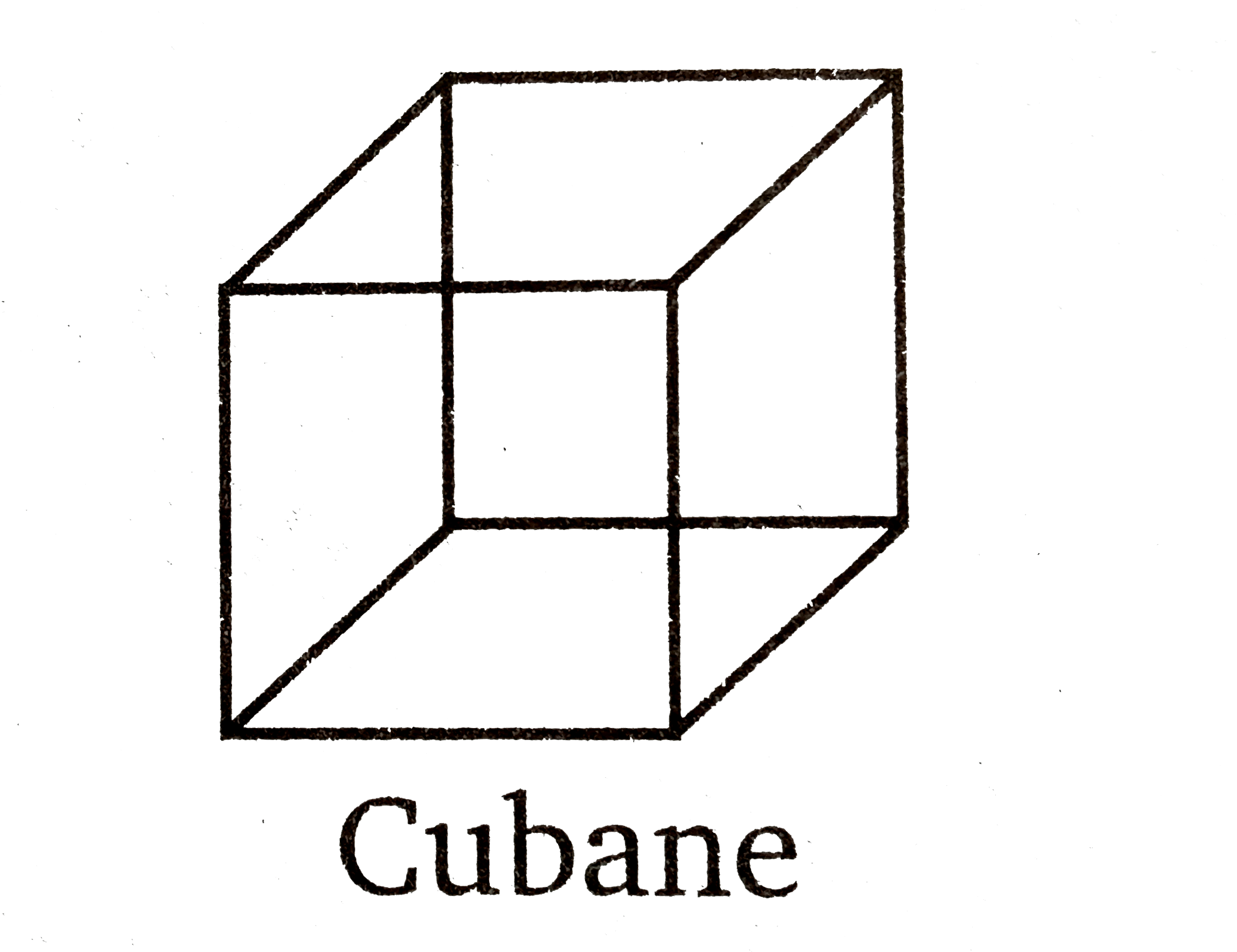
View SolutionHow many bond cleavages are required to convert cubane into non-cyclic skeleton?
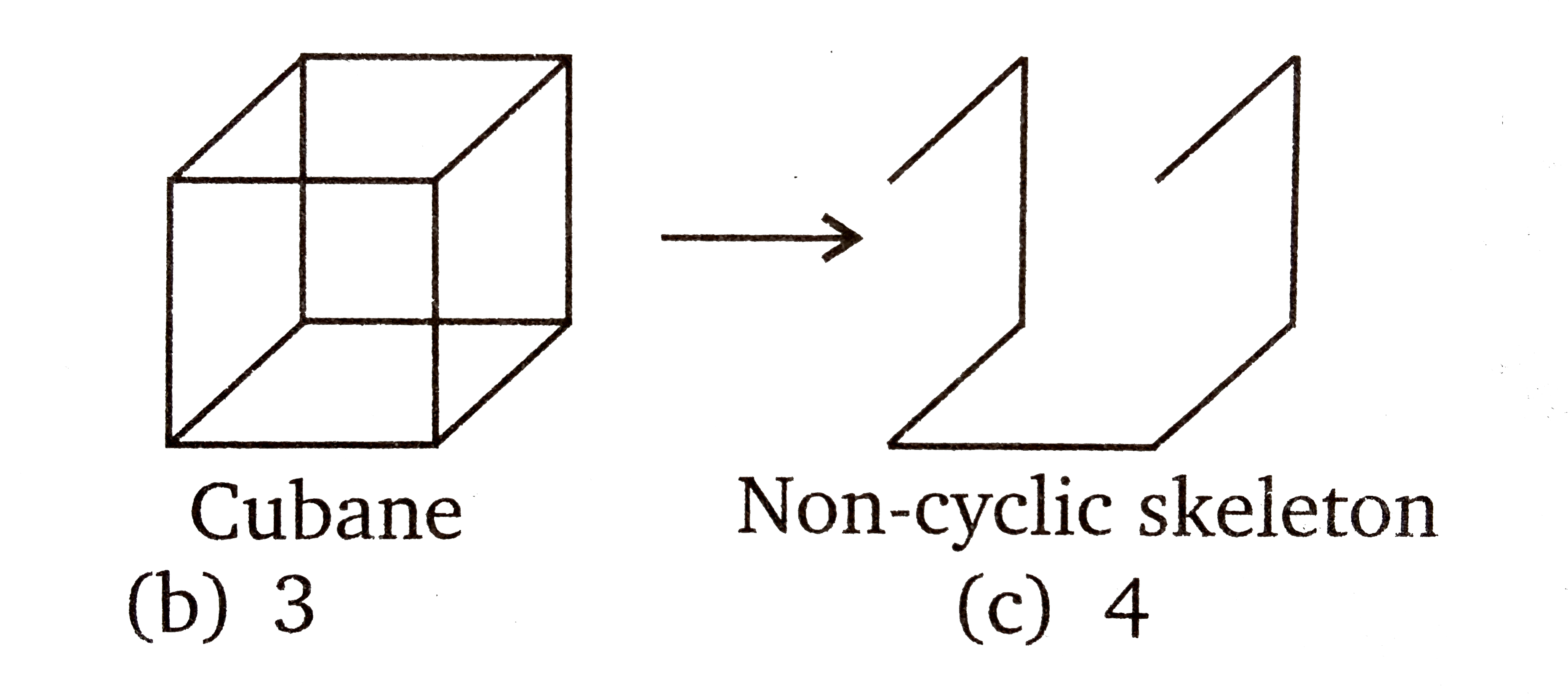
View Solution`CH_(3)-underset(CH_(3))underset(|)(CH)-CH_(2)-CH_(3)overset(Cl_(2))underset(h_(v))(to)`
Number of monochloro product including stereoisomers.
View Solution
Product (P) is :
View Solution`overset(H_(2)("1 mole")//Pt)(to)`

Double bond equivalent (degree of Unsaturation) of (A) is:
View SolutionArrange the following alkanes in decreasing order of their heats of combustion.
(i) `CH_(3)-overset(CH_(3))overset(|)underset(("Neo-pentane")(i))underset(CH_(3))underset(|)(C)-CH_(3)` (ii) `CH_(3)-underset((Iso-pentane)(ii))underset(CH_(3))underset(|)(CH)-CH_(2)-CH_(3)`
(iii) `CH_(3)-CH_(2)-underset(("n-pentane"))(CH_(2)-CH_(2)-CH_(3)`
View Solution
Product of the above reaction will be:
View Solution
Which of the following compound will not be obtained as a product in the above reaction?
View SolutionFollowing are the structures of four isomer of hexane. Among the names given below, which correctly identifies the fifth isomers?
`{:(CH_(3)CH_(2)CH_(2)CH_(2)CH_(2)CH_(3),(CH_(3))_(3)C CH_(2)CH_(3)),((CH_(3))_(2)CHCH_(2)CH_(2)CH_(3),(CH_(3))_(2)CHCH(CH_(3))_(2)):}`
View SolutionWhich of the following describes the best relationship between the methyl groups in the chir conformation of the substance shown below?
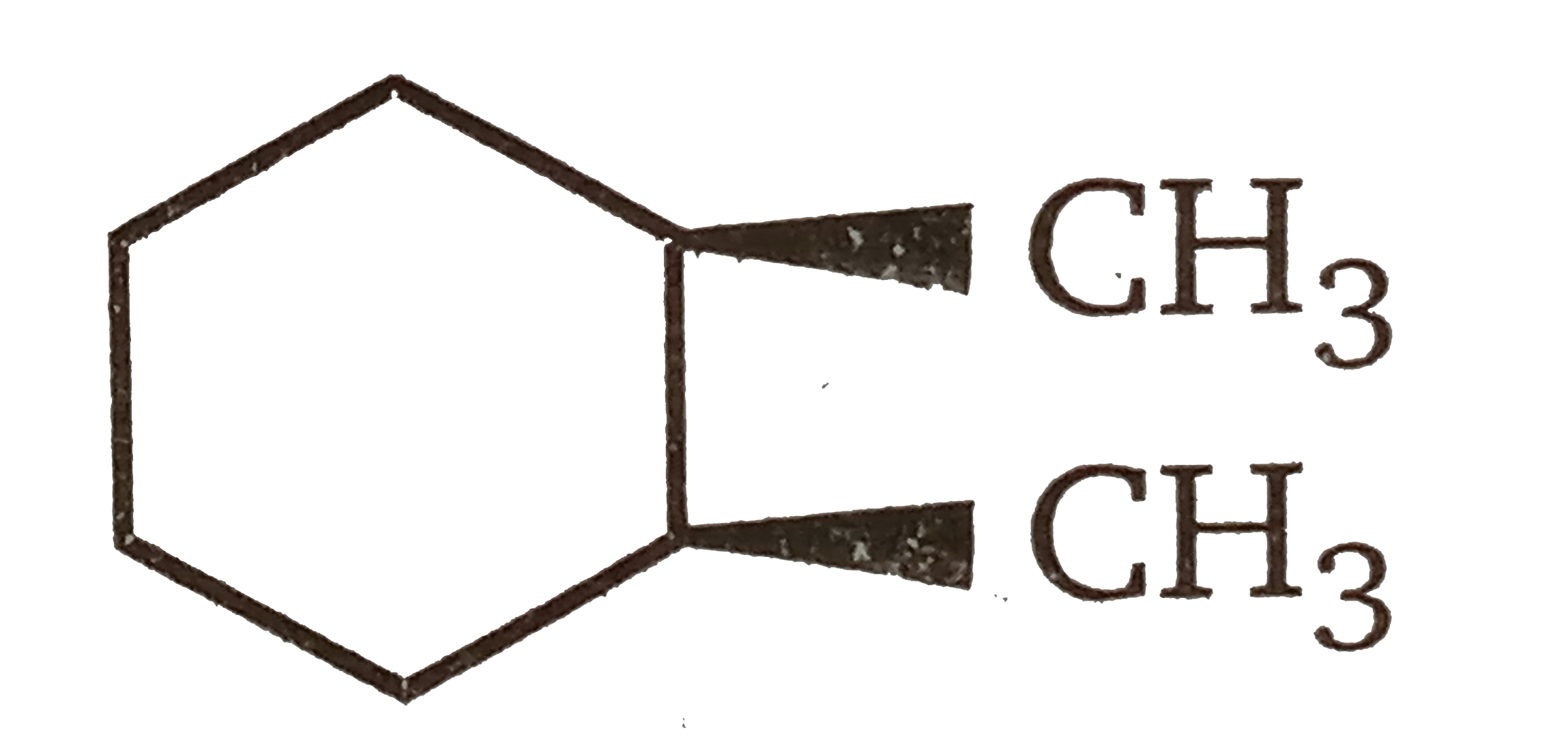
View SolutionCompare the stabilities of the following two compounds :
A : cis-1-Ethy-3-methycyclohexane
B : trans-1-Ethyl-3-methycyclohexane
View SolutionWhich conformation of ethatne has the lowest potential energy?
View SolutionEthane is subjected to combustion process. During the combustion the hybrid state of carbon changes from:
View Solution`CH_(3)-CH_(2)-CH_(2)-CH_(3)overset(AlCl_(3))underset(Delta)(to)CH_(3)-underset(CH_(3))underset(|)(CH)-CH_(3)`
Above reaction is an example of:
View SolutionWhich of the following has highest chlorine content?
View SolutionPure methane can be prepared by:
View SolutionCalcium carbide + heavy water `rarr` ?
The product of the above reaction is :
View Solution
Arrange the compounds I,II and III decreasing order of their heats of combustion:
View SolutionAn alkane (mol. Wt. = 86) on bromination gives only two monobromo derivatives (excluding stereoisomers). The alkane is:
View SolutionOrder of the bond strength of C-H bonds involving `sp, sp^(2)` and `sp^(3)` hybridized carbon atom is:
View Solution
Among the structures given, select the enantiomers:
View Solution
The correct order of reactivity of I, II & III towards addition reactions is:
View Solution
Product (A) of above reaction is:
View SolutionWhich of the following reactants is suitable for preparation of methane and ethane by using one step only?
View SolutionHow many carbon atoms does not an alkane (not a cycloalkane) need before it is capable to exist in enantiomeric form?
View Solution`(A) + Cl_(2) overset(hv)(to)` monochloro product
To maximise the yield of monochloro product in the above reaction?
View Solution`CH_(2)-CH_(2)-CH_(2)-CH_(3)overset(Br_(2)//hv)(to)`
Major product in the above reaction is:
View SolutionSelect the chain propagation steps in the free-radical chlorination of methane.
(1) `Cl_(2) to 2Cl^(*)` (2) `Cl^(*) + CH_(4) to CH_(3)Cl + H^(*)`
(3) `Cl^(*) + CH_(4) to CH_(3)^(*) + HCl` (4) `H^(*) + Cl_(2) to HCl + Cl^(*)`
(5) `CH_(3)^(*) + Cl_(2) to CH_(3)Cl + Cl^(*)`
View Solution Monobromo derivatives
Monobromo derivatives
The number of possible monobromo products is (excluding stereoisomers):
View Solution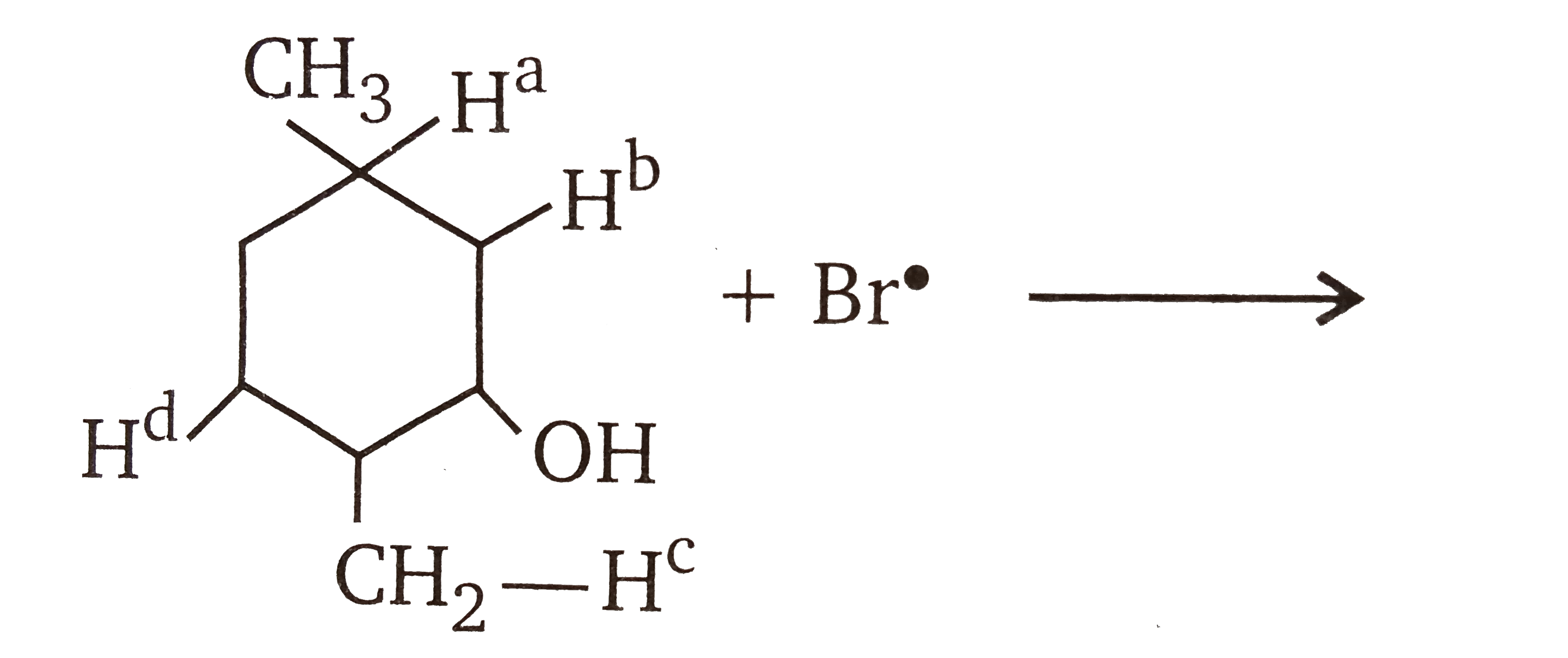
`Br^(**)` will abstract which of the hydrogen most readily?
View SolutionArrange the following compounds in decreasing order of their heats of combustion:

View Solution`underset(a)(CH_(3))-underset(b)(CH_(2))-underset(c)(CH_(2))-underset(d)(CH_(2))-F`
Arrange the hydrogens a, b, c, d, in decreasing order of their reactivities towards chlorination:
View SolutionOn catalytic reduction with `H_(2)//Pt` how many alkenes will give n-butane?
View SolutionOn catalytic reduction `(H_(2)//Pt)` how many alkenes will give 2-methylbutane?
View Solution
How many dichloro products are formed in the above reaction (including stereoisomers) ?
View Solution
Product of the above reaction will be:
View Solution`Ph-CH_(2)-underset(D)underset(|)(CH)-CH_(3) overset(Br_(2)//hv)(to)`
Product the above reactio will be :
View Solution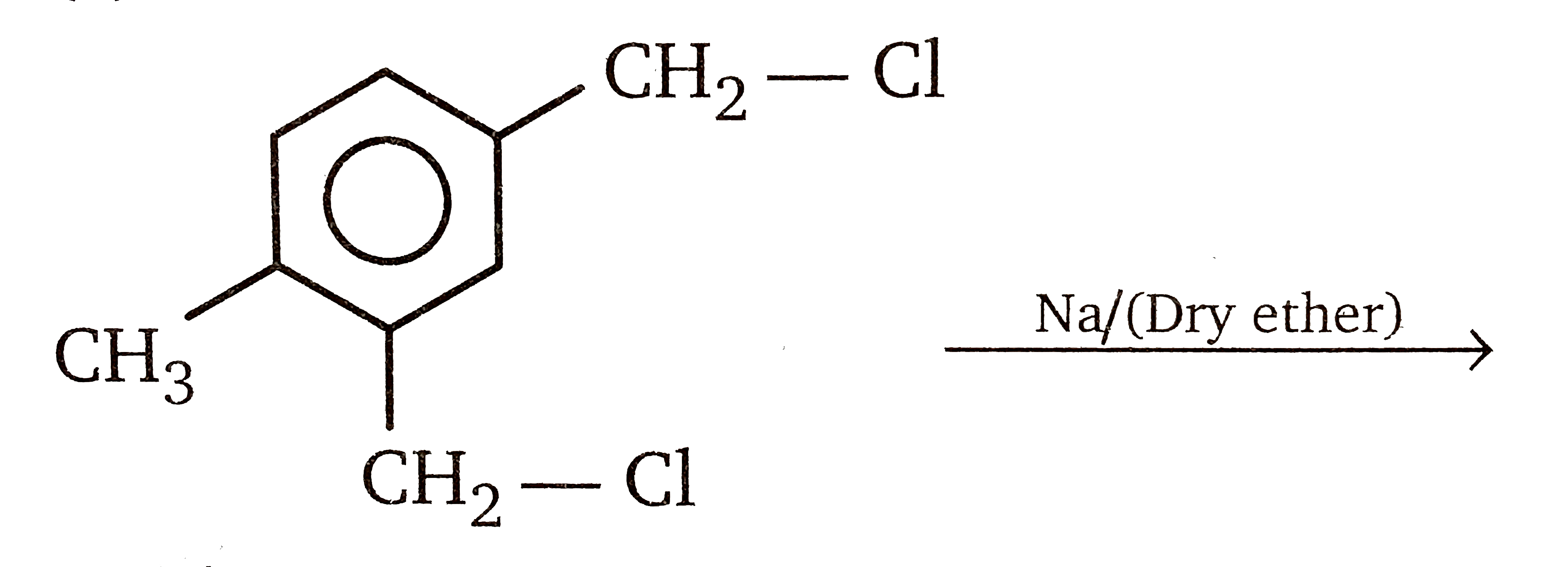
Product of the above Wurtz reaction is:
View SolutionRank the transition states that occur during the following reaction steps in order of increasing stability (least `rarr` most stable):
`{:(1.,H_(3)C-overset(+)(O)H_(2)toCH_(3)^(+)+H_(2)O),(2.,(CH_(3))_(3)C-overset(+)(O)H_(2)to(CH_(3))_(3)C^(+)+H_(2)O),(3.,(CH_(3))_(2)CH-overset(+)(O)H_(2)to(CH_(3))_(2)CH^(+)+H_(2)O):}`
View SolutionWhich of the following does not represent major product of that reaction?
View SolutionFor the given (1,2,3), consider the following reaction
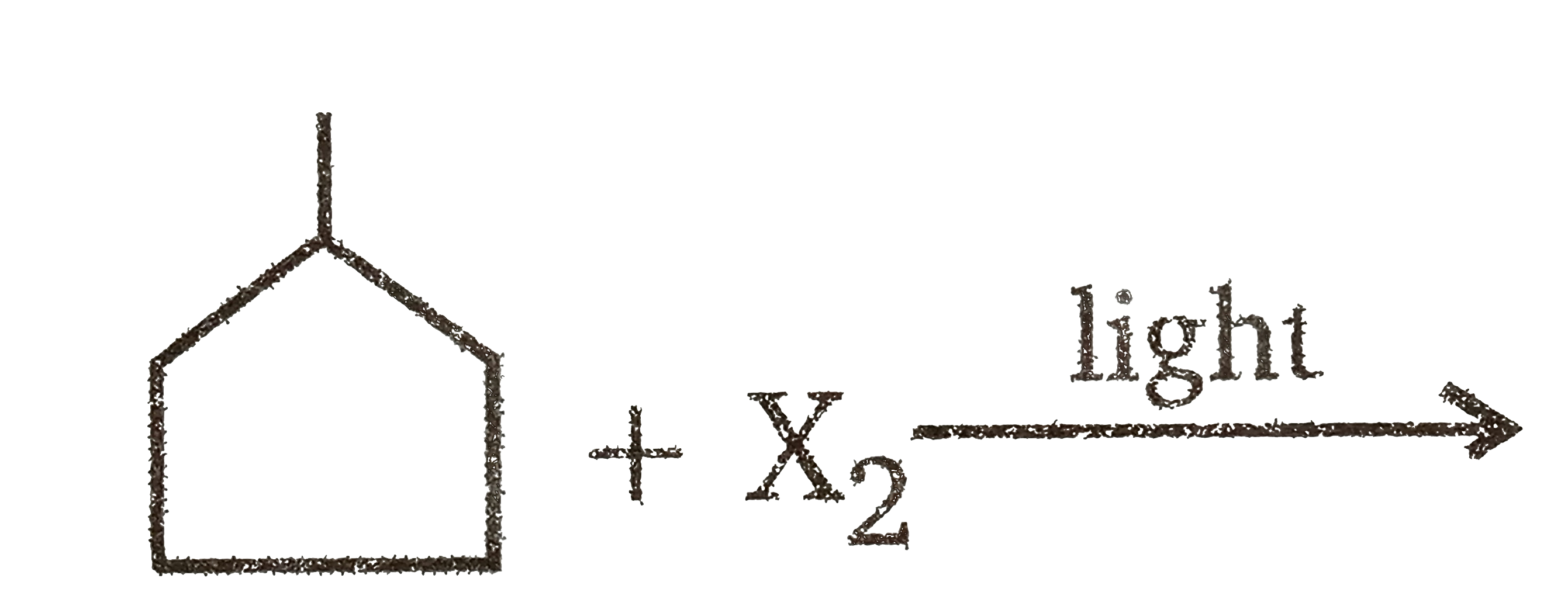 monohalogenation product
monohalogenation product
Light is involved in which step of the reaction:
View SolutionFor the given (1,2,3), consider the following reaction
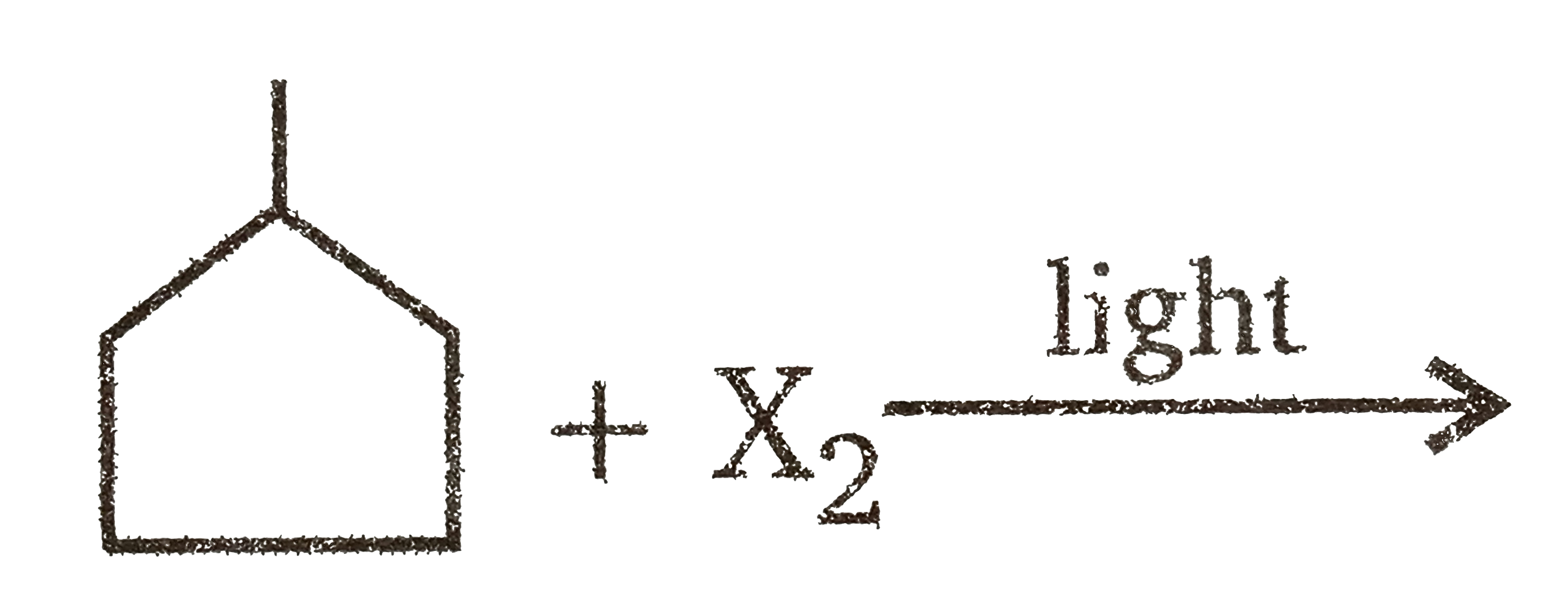 monohalogenation product
monohalogenation product
Which halogen will the best yield of a single monohalogenation product?
View SolutionFor the given (1,2,3), consider the following reaction
 monohalogenation product
monohalogenation product
How many monohalo derivatives are possible (excluding stereoisomers)?
View SolutionHalogenation is a substitution reaction, where halogen replaces one or more hydrogens of hydrocarbon
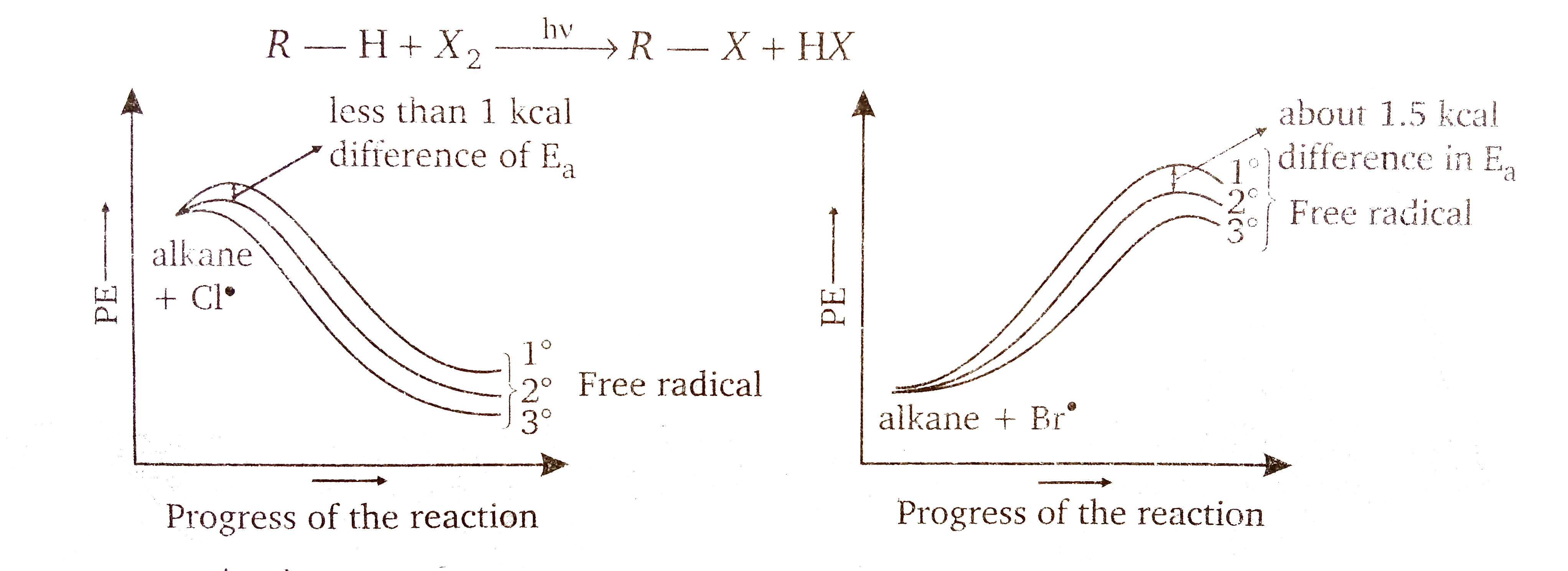
Chlorine free radical make `1^(@), 2^(@), 3^(@)` radicals with almost equal ease, whereas bromine free radicals have a clear preference for the formation of tertiary free radicals. So, bromine is less reactive, and more selectrive whereas chlorine is less selective and more reactive.
The relative rate of abstraction of hydrogen by `Br^(**)` is
`underset(1600)(3^(@)) gt underset(82)(2^(@)) gt underset(1)(1^(@))`
`underset(5)(3^(@)) gt underset(3.8)(2^(@)) gt underset(1)(1^(@))`
1-halo-2,3-dimethyl butane will be obtained in better yields, if halogen is:
View SolutionHalogenation is a substitution reaction, where halogen replaces one or more hydrogens of hydrocarbon
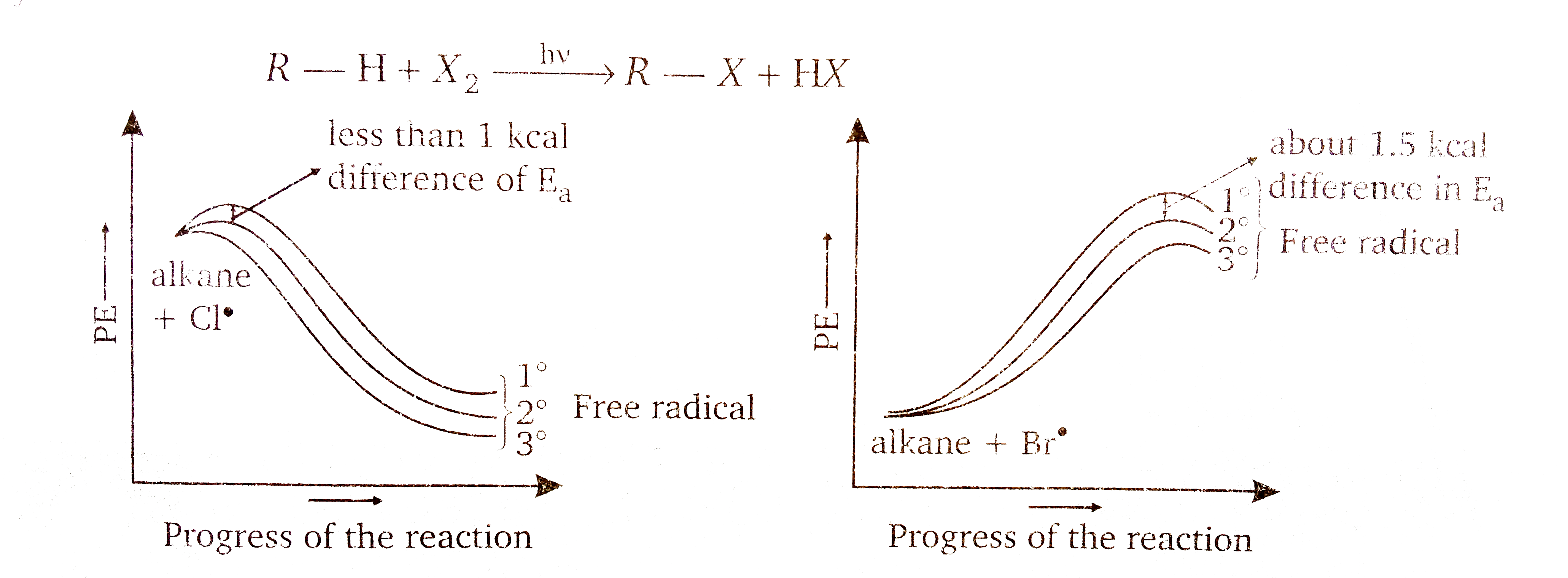
Chlorine free radical make `1^(@), 2^(@), 3^(@)` radicals with almost equal ease, whereas bromine free radicals have a clear preference for the formation of tertiary free radicals. So, bromine is less reactive, and more selectrive whereas chlorine is less selective and more reactive.
The relative rate of abstraction of hydrogen by `Br^(**)` is
`underset(1600)(3^(@)) gt underset(82)(2^(@)) gt underset(1)(1^(@))`
`underset(5)(3^(@)) gt underset(3.8)(2^(@)) gt underset(1)(1^(@))`

Above product will obtained in better yield if X is
View SolutionHalogenation is a substitution reaction, where halogen replaces one or more hydrogens of hydrocarbon
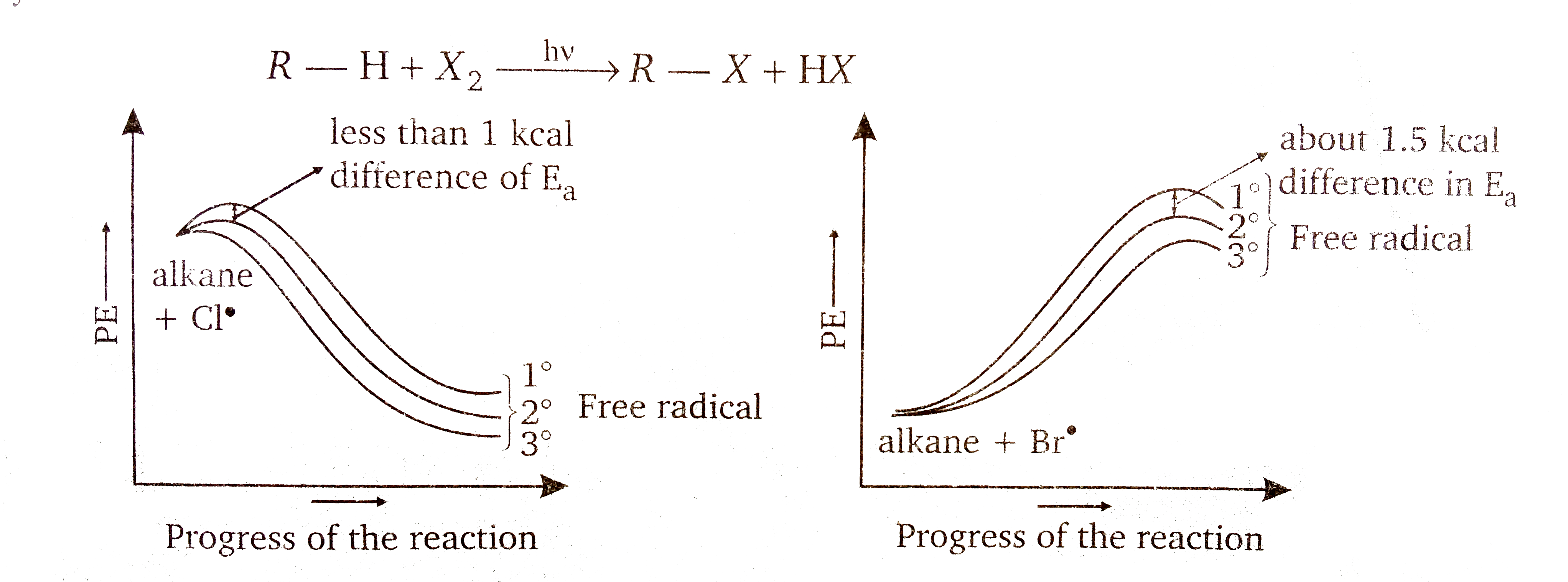
Chlorine free radical make `1^(@), 2^(@), 3^(@)` radicals with almost equal ease, whereas bromine free radicals have a clear preference for the formation of tertiary free radicals. So, bromine is less reactive, and more selectrive whereas chlorine is less selective and more reactive.
The relative rate of abstraction of hydrogen by `Br^(**)` is
`underset(1600)(3^(@)) gt underset(82)(2^(@)) gt underset(1)(1^(@))`
`underset(5)(3^(@)) gt underset(3.8)(2^(@)) gt underset(1)(1^(@))`
`CH_(3)-overset(CH_(3))overset(|)(CH)-CH_(3)overset(Cl_(2)//hv)(to)` product
Major product in the above reactio is:
View SolutionHalogenation is a substitution reaction, where halogen replaces one or more hydrogens of hydrocarbon
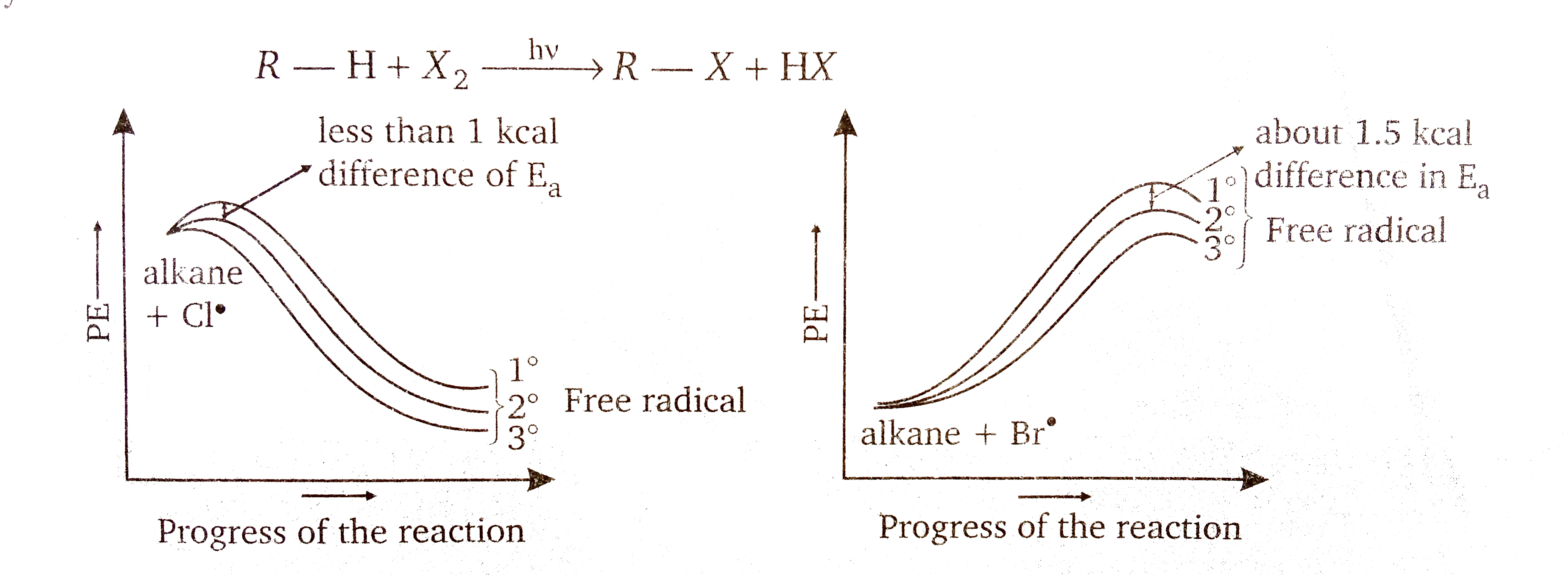
Chlorine free radical make `1^(@), 2^(@), 3^(@)` radicals with almost equal ease, whereas bromine free radicals have a clear preference for the formation of tertiary free radicals. So, bromine is less reactive, and more selectrive whereas chlorine is less selective and more reactive.
The relative rate of abstraction of hydrogen by `Br^(**)` is
`underset(1600)(3^(@)) gt underset(82)(2^(@)) gt underset(1)(1^(@))`
`underset(5)(3^(@)) gt underset(3.8)(2^(@)) gt underset(1)(1^(@))`
Which of the following will give five monochloro products, when allowed to react with `Cl_(2)` in presence of sun light (excluding stereoisomers)?
View SolutionHalogenation is a substitution reaction, where halogen replaces one or more hydrogens of hydrocarbon
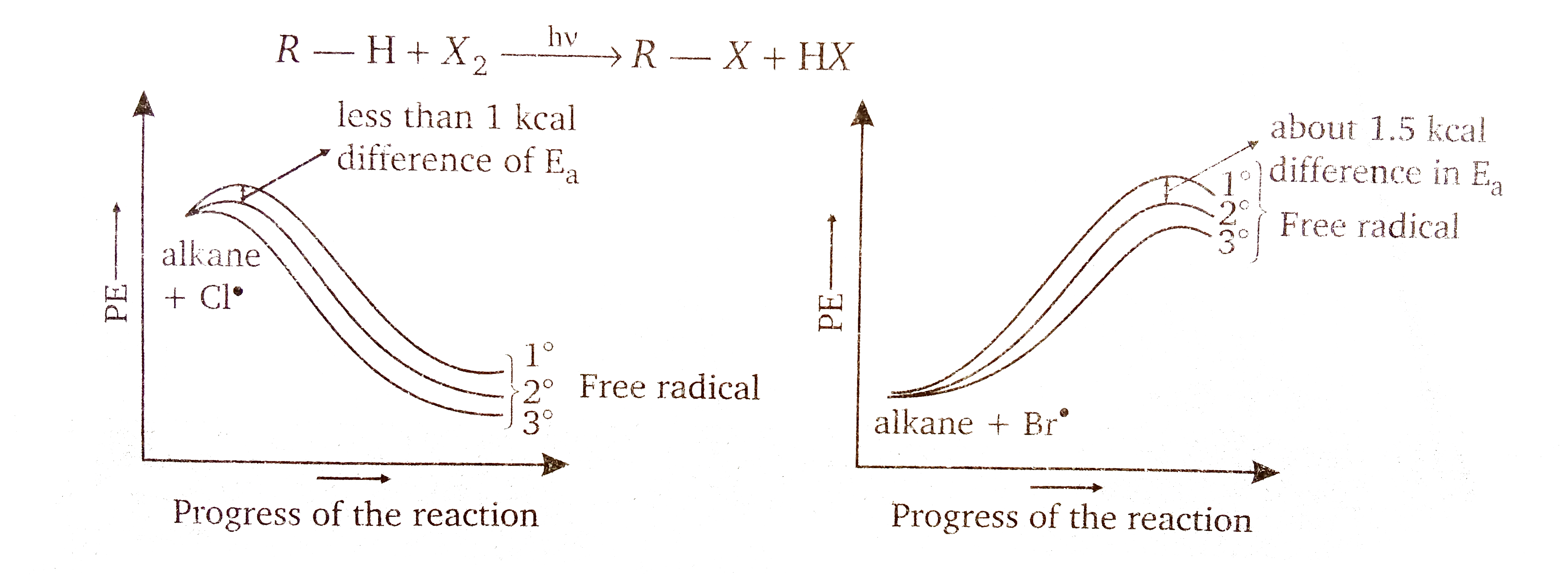
Chlorine free radical make `1^(@), 2^(@), 3^(@)` radicals with almost equal ease, whereas bromine free radicals have a clear preference for the formation of tertiary free radicals. So, bromine is less reactive, and more selectrive whereas chlorine is less selective and more reactive.
The relative rate of abstraction of hydrogen by `Br^(**)` is
`underset(1600)(3^(@)) gt underset(82)(2^(@)) gt underset(1)(1^(@))`
`underset(5)(3^(@)) gt underset(3.8)(2^(@)) gt underset(1)(1^(@))`

What is the value of x (% yield of product)?
View SolutionHalogenation is a substitution reaction, where halogen replaces one or more hydrogens of hydrocarbon
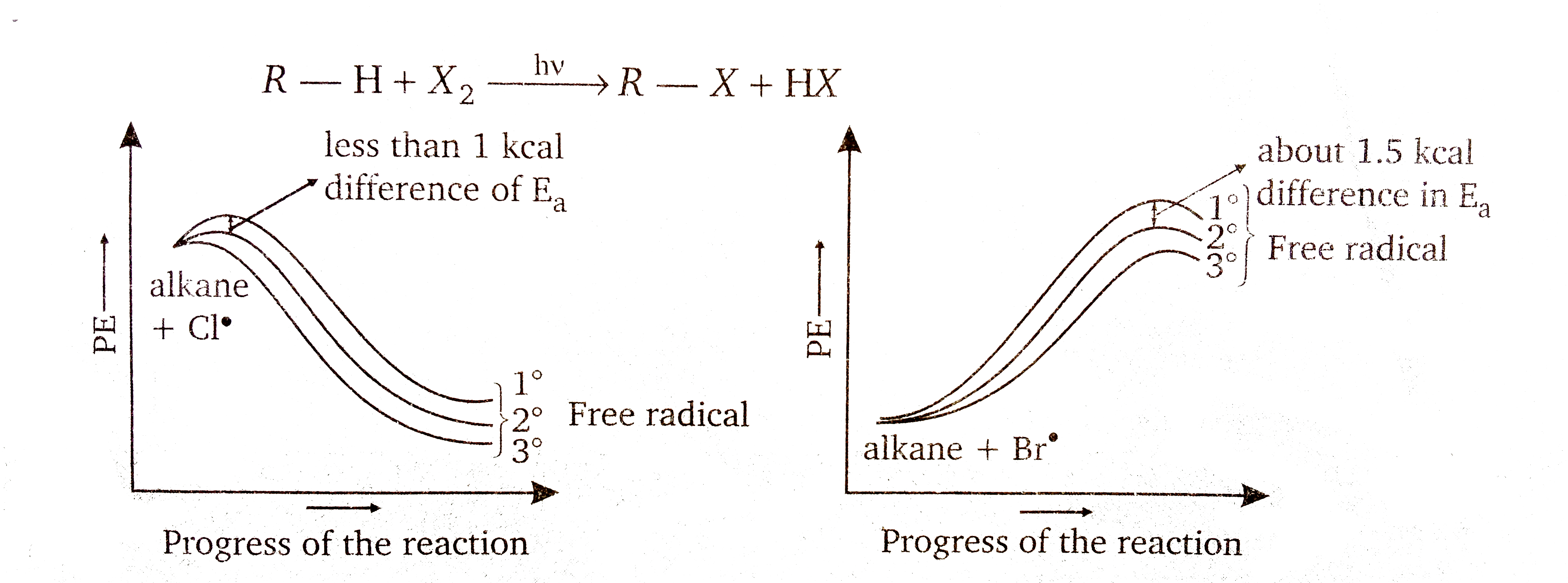
Chlorine free radical make `1^(@), 2^(@), 3^(@)` radicals with almost equal ease, whereas bromine free radicals have a clear preference for the formation of tertiary free radicals. So, bromine is less reactive, and more selectrive whereas chlorine is less selective and more reactive.
The relative rate of abstraction of hydrogen by `Br^(**)` is
`underset(1600)(3^(@)) gt underset(82)(2^(@)) gt underset(1)(1^(@))`
`underset(5)(3^(@)) gt underset(3.8)(2^(@)) gt underset(1)(1^(@))`
What would be the product ratio x/y in the chlorination of propane if all the hydrogen were abstracted at equal rate?
`CH_(3)-CH_(2)-CH_(3)overset(Cl_(2))underset(hv)(to)CH_(3)-CH_(2)-underset((x))underset()underset()(CH_(2))-Cl+CH_(3)-underset((y))underset(Cl)underset(|)CH-CH_(3)`
View SolutionHalogenation is a substitution reaction, where halogen replaces one or more hydrogens of hydrocarbon
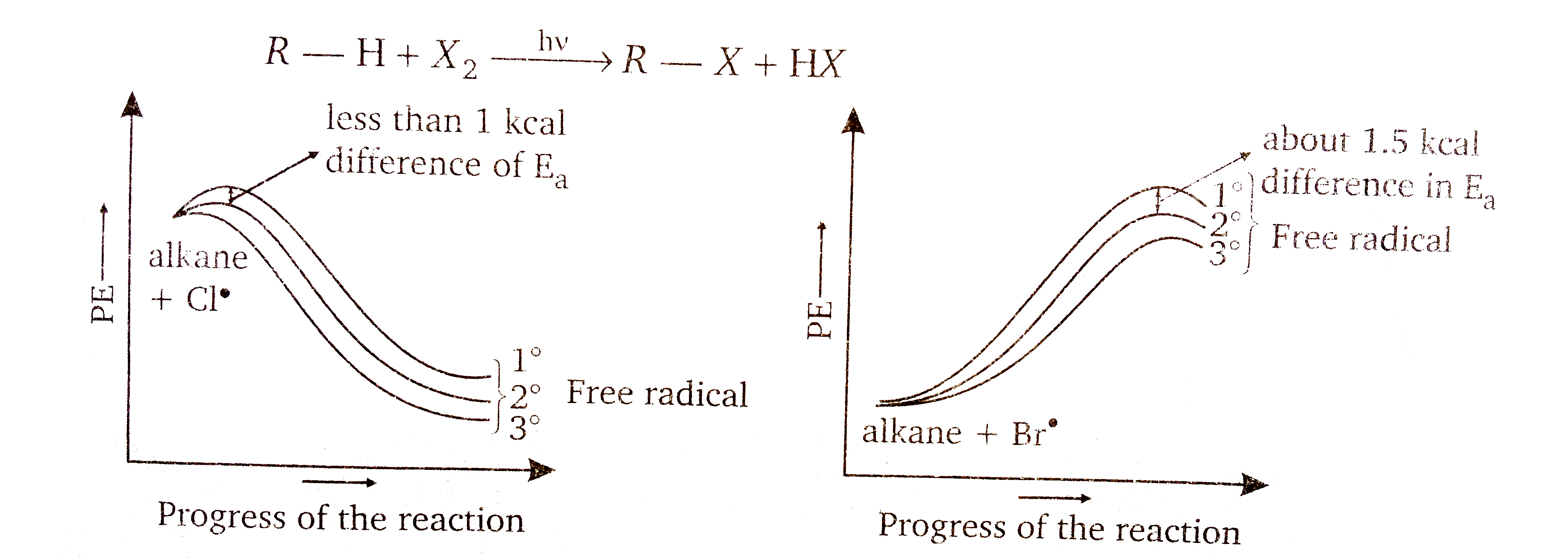
Chlorine free radical make `1^(@), 2^(@), 3^(@)` radicals with almost equal ease, whereas bromine free radicals have a clear preference for the formation of tertiary free radicals. So, bromine is less reactive, and more selectrive whereas chlorine is less selective and more reactive.
The relative rate of abstraction of hydrogen by `Br^(**)` is
`underset(1600)(3^(@)) gt underset(82)(2^(@)) gt underset(1)(1^(@))`
`underset(5)(3^(@)) gt underset(3.8)(2^(@)) gt underset(1)(1^(@))`
How many dichloro products (including stereoisomers) will be formed when R-2-chloropentane reacts with `Cl_(2)` in presence of UV radiation?
View Solution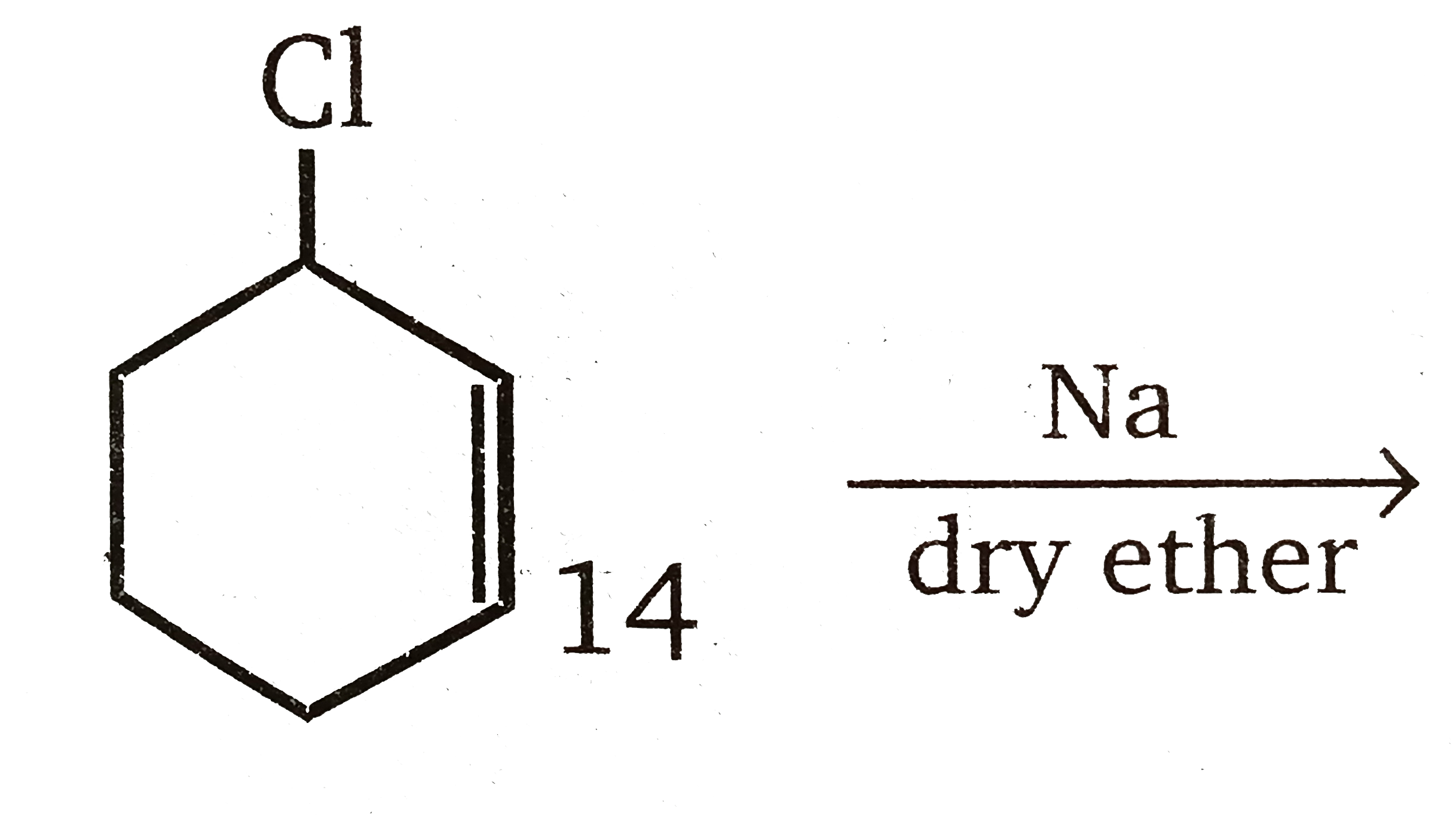 `overset(Na)underset("dry ether")(to)(A)`, product (A) is:
`overset(Na)underset("dry ether")(to)(A)`, product (A) is:
View Solution `overset(H_(2)("1 mole"))underset(Pt)(to)(A)`, product (A) is:
`overset(H_(2)("1 mole"))underset(Pt)(to)(A)`, product (A) is:
View Solution`Ph-CH_(2)-overset(O)overset(||)(C)-OHoverset((1) NaOH, CaO, Delta)underset((2) H^(oplus))(to) (A)`
Product (A) is:
View SolutionMatch the column I with column II and with column III.
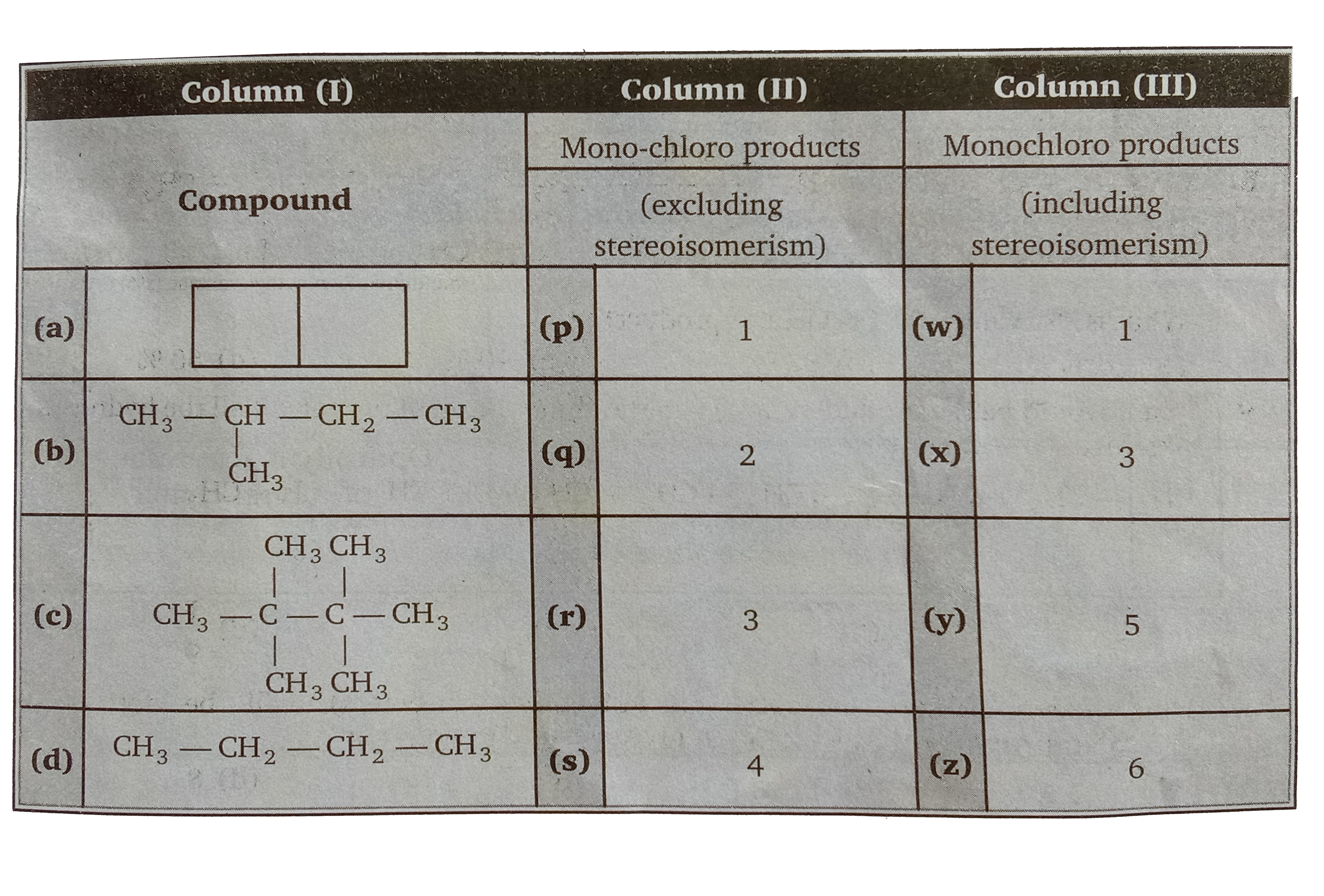
View SolutionComplete the following reaction

View SolutionMatch the column I and II
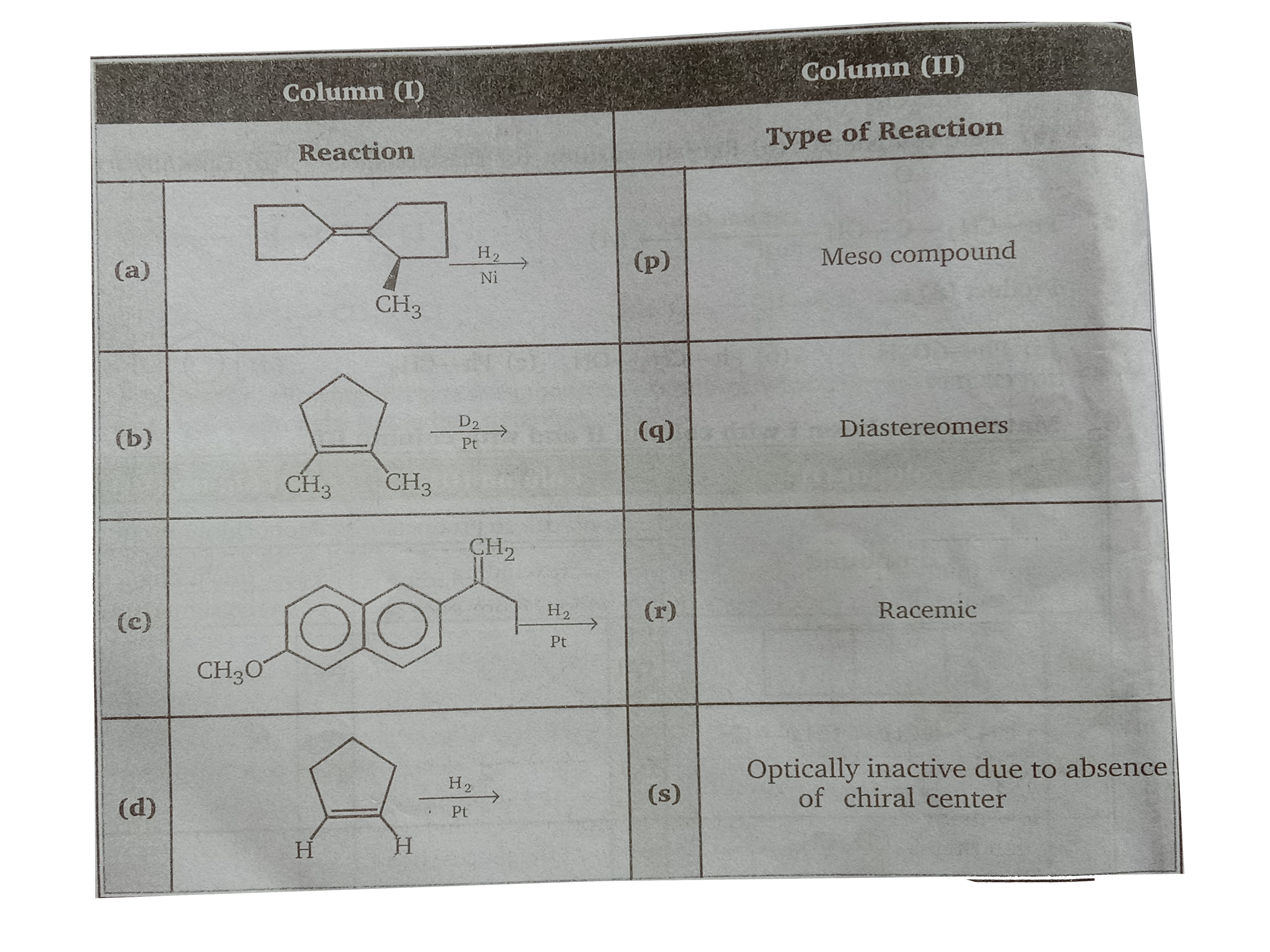
View SolutionMatch the column I and II
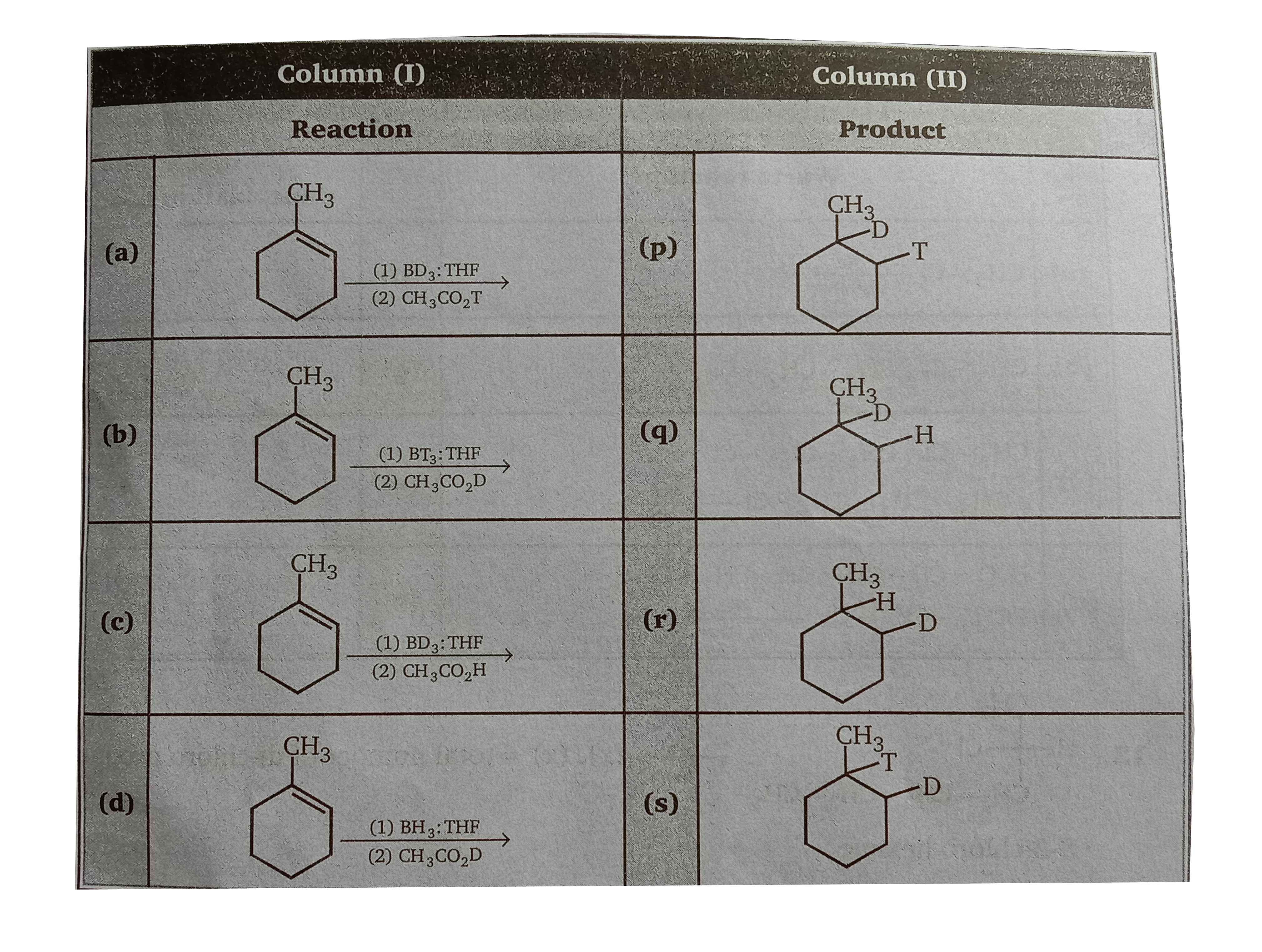
View SolutionHow many distinct monochlorinated products, (including sterioisomers) may be obtained when then alkane show below is heated in the presence of `Cl_(2)`?
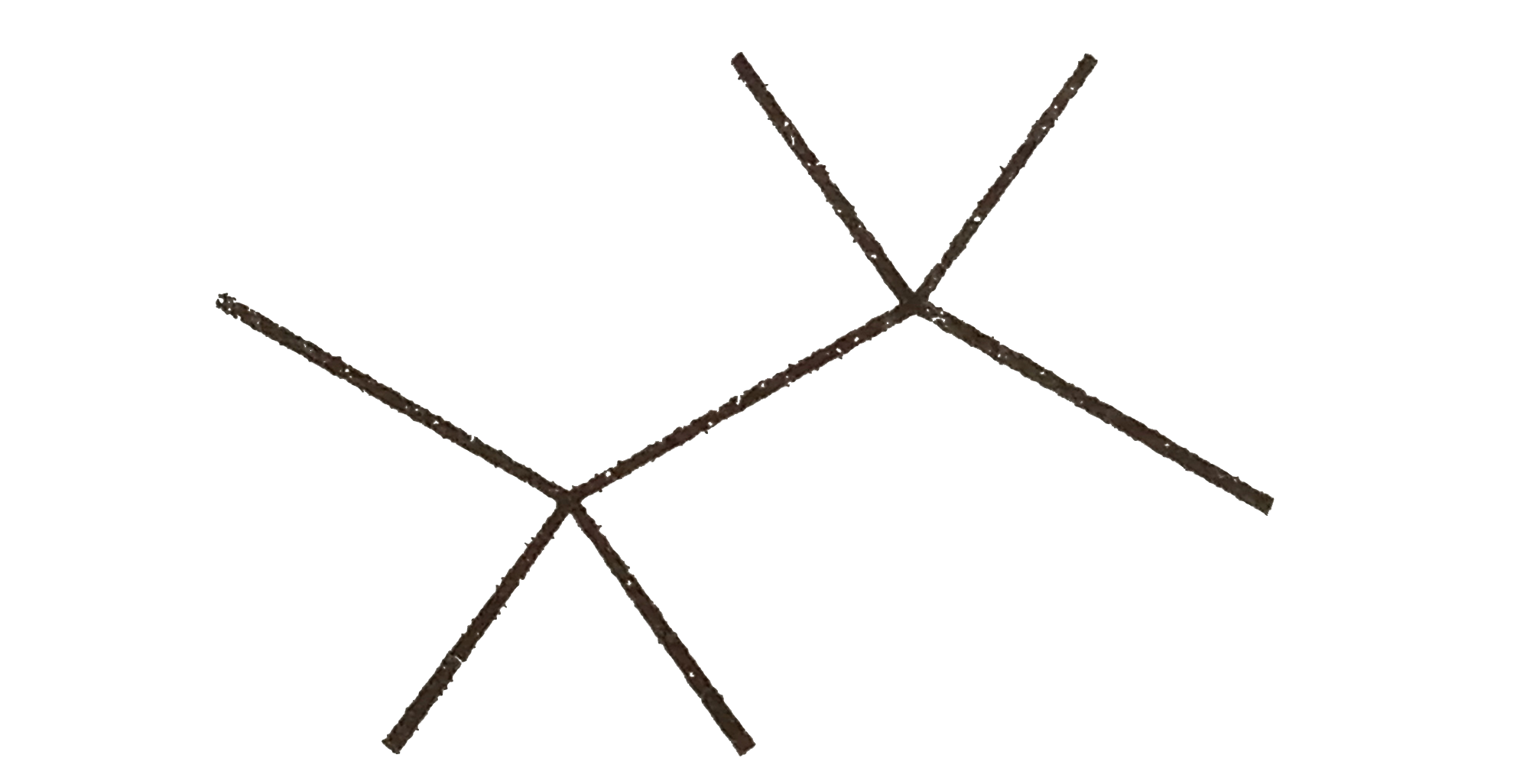
View SolutionHow many distinct monochlorinated products, (including sterioisomers) may be obtained when then alkane show below is heated in the presence of `Cl_(2)`?
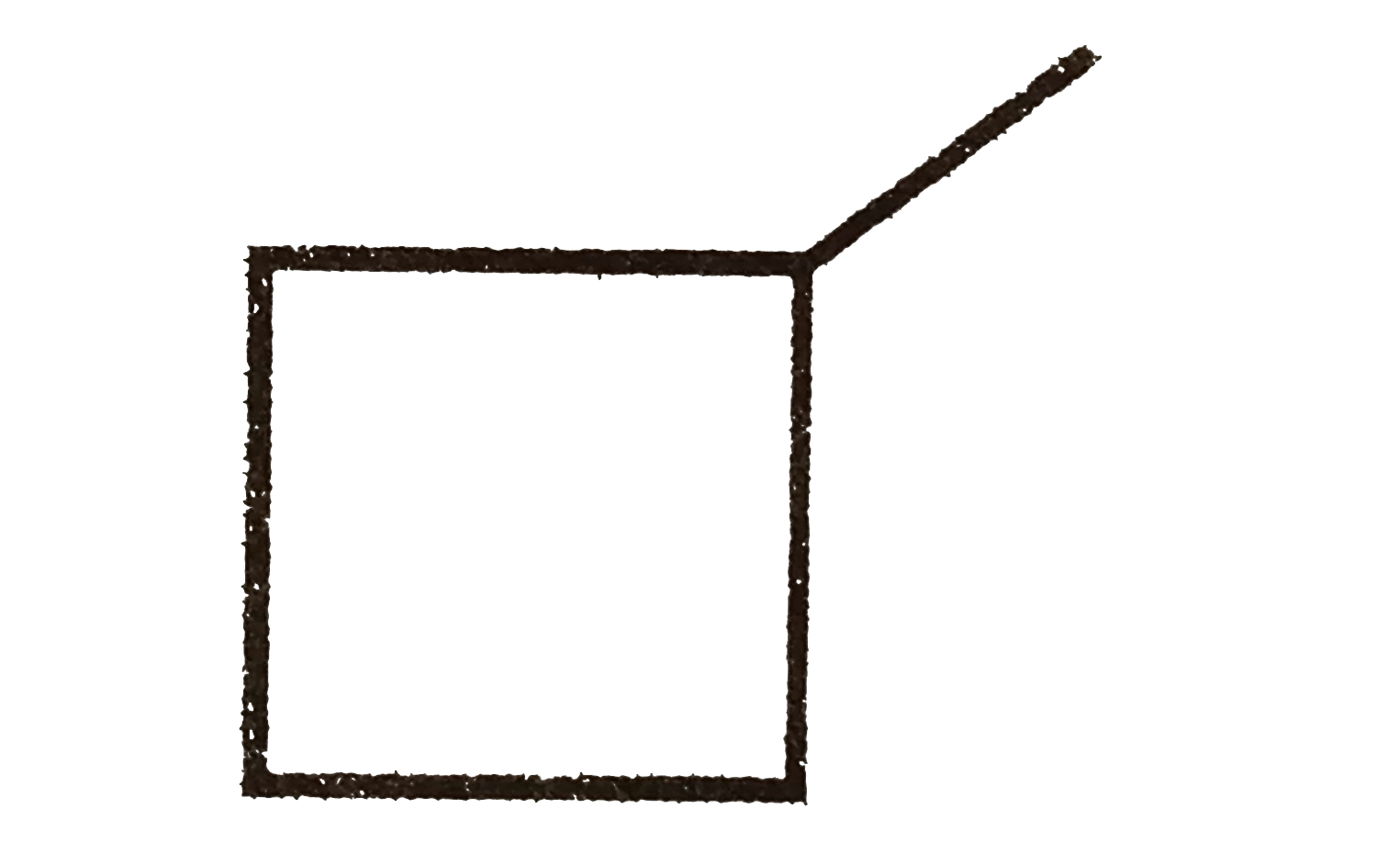
View SolutionMatch the column I and II
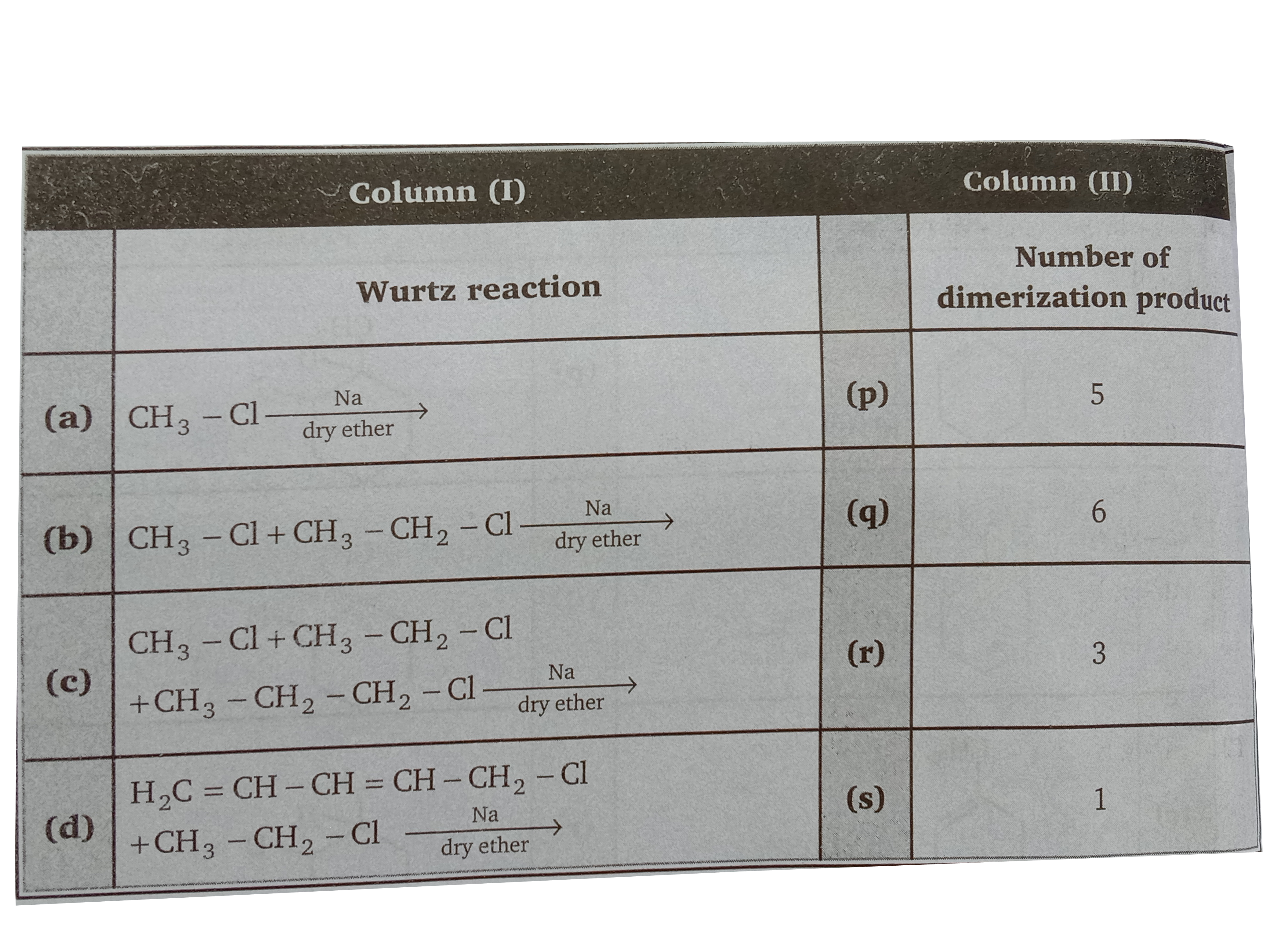
View Solution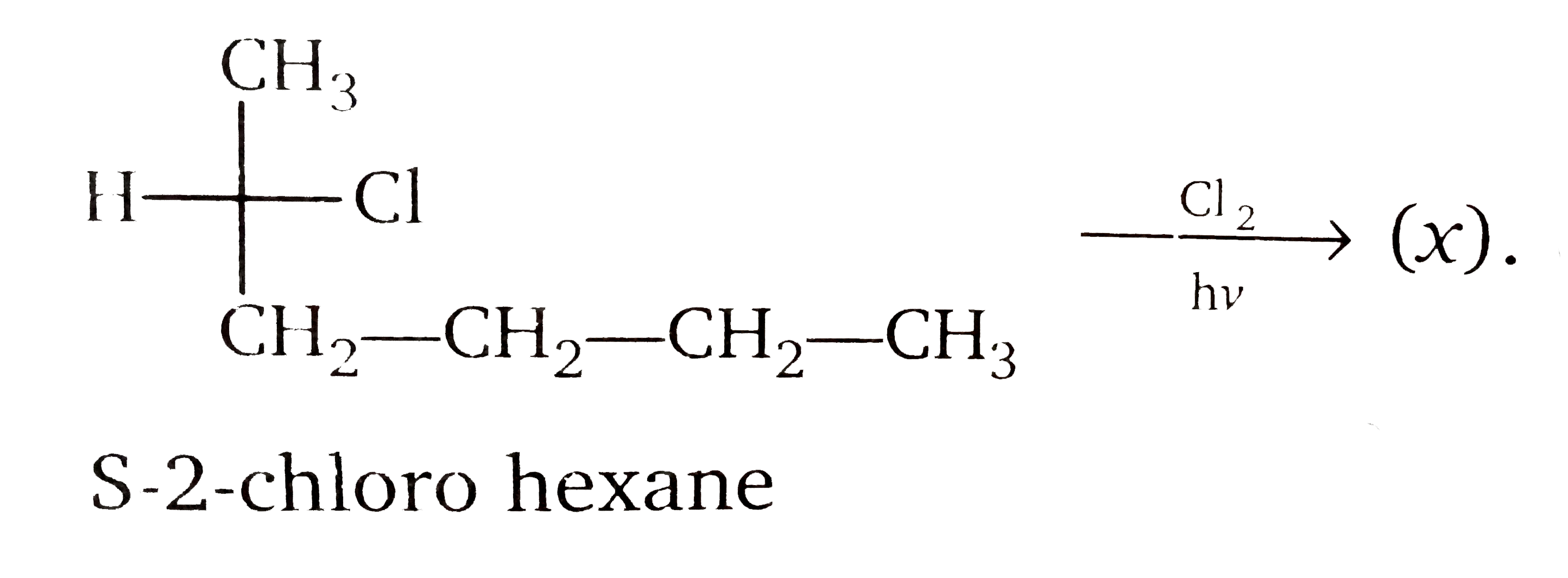 = total number of di-chloro product s-2-chloro hexane
= total number of di-chloro product s-2-chloro hexane
View Solution
Exercise questions and complete solutions for chapter HYDROCARBONS (ALKANES) of MS CHOUHAN CHEMISTRY (HINGLISH) of Class 11